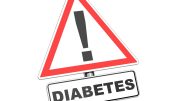
A new study show the social and economic inequality in the way the pandemic is playing out.
Patients from more socially vulnerable areas were sicker when they got to hospitals, but did just as well by the time they left – suggesting the importance of early and equal access to care.
COVID-19 has sent nearly 900,000 Americans to the hospital in the past two years. A new study shows that the ZIP codes they came from had a lot to do with how sick they were when they got to the hospital, and how much care they needed once they were there.
But those differences disappeared by the time their stays were done — whether they left the hospital alive or dead.
The new findings, published in the Annals of Internal Medicine, show the importance of social and economic inequality in the way the pandemic is playing out — including how early in their illness people seek or get access to care.
Even after the researchers took into account the underlying health of each person they studied, the social vulnerability index, or SVI, of their home ZIP code still made a difference. SVI combines multiple factors to create a score based on such things as a local area’s average income, education level and household density to the percentage of households led by single parents, or where English is not the primary language.
The findings could help policymakers target less-privileged areas with more services to prevent and respond to COVID-19 cases; SVI has already been used by the state of Michigan, and other states, to prioritize COVID vaccination outreach.
The study also shows the role of hospitals in equalizing outcomes for people from unequal backgrounds.
The research team behind the study, from the University of Michigan and the University of Colorado, used data from more than 2,300 patients hospitalized for COVID-19 in 38 hospitals across Michigan from March to December of 2020.
People who lived in the most underprivileged ZIP codes were more likely to have severe symptoms such as low blood oxygen levels when admitted, and to need support for failing lungs and other organs through technologies such as ventilators and dialysis once they were in a hospital bed.
But they were no more likely to die than those from more-privileged areas, and no less likely to go back to their own homes instead of a nursing home.
“Outcomes at hospital discharge appear equitable for these patients, but the question is, what leads to the initial disparities in seriousness of illness that they arrive with?” said Renuka Tipirneni, M.D., M.S., lead author of the new study and an assistant professor of internal medicine at Michigan Medicine, U-M’s academic medical center. “Are people not getting access to testing or treatment early in their illness? Are there other individual patient-level social risks such as ongoing difficulties with transportation, housing, or sick leave at work? Did they delay seeking care because of lack of access?”
Tipirneni and her colleagues, including Vineet Chopra, M.D., M.Sc., Robert W. Schrier Chair of Medicine and professor of medicine at the University of Colorado School of Medicine, used data from a statewide database called Mi-COVID19. Funded by Blue Cross Blue Shield of Michigan through its Collaborative Quality Initiative effort, it pools anonymous data on people hospitalized with COVID-19.
The study follows on work that Tipirneni and colleagues published just over a year ago, showing SVI at the county level had much to do with COVID-19 case rates and death rates. But the new analysis of individual patient data and ZIP code-level SVI is much more indicative of the hyper-local conditions that can shape a person’s access to and use of care.
“Once they’re getting that care, there are equal outcomes, which is encouraging,” said Tipirneni. “This analysis zooms in on individual patients, and zooms out on what’s influencing their outcomes in their neighborhood.”
She notes that more disadvantaged (higher SVI) areas are found across the state and nation, from very rural areas to the centers of cities. In fact, anyone can use this CDC tool to find the SVI of any ZIP code – the numbers range from 0 (lowest level of social vulnerability) to 1 (highest level).
In the new study, the researchers divided SVI into four quartiles, and looked at difference in percentages of patients who experienced each type of severe symptom, treatment option, and outcome by quartile. Differences of several percentage points emerged for most measures, even after factoring out individual patients’ underlying health status.
One of the things that policymakers, public health authorities, and health systems might want to focus on as a result of the new study is how they make information available to people about when and how they should seek care for worsening COVID-19 symptoms, and when to prioritize seeking that care over anything else.
Making information available in multiple languages, and ensuring that outpatient treatment and transportation to appointments are available during the times people need it no matter what their schedule, are two specific things that could make a difference.
High, or worse, SVI has also been shown to correlate with low COVID-19 vaccination rates, so once data from 2021 are available through Mi-COVID19, the team will look at how care and outcomes for people with severe COVID-19 changed once vaccines were available.
The team is also using the Social Determinants of Health tool created by the Agency for Healthcare Research and Quality to explore how other factors not included in the standard SVI measure interact with COVID-19 risks and outcomes.
Reference: “Contribution of Individual- and Neighborhood-Level Social, Demographic, and Health Factors to COVID-19 Hospitalization Outcomes” by Renuka Tipirneni, MD, MSc, Monita Karmakar, PhD, MS, Megan O’Malley, PhD, Hallie C. Prescott, MD, MSc and Vineet Chopra, MD, MSc, 22 February 2022, Annals of Internal Medicine.
DOI: 10.7326/M21-2615
In addition to Tipirneni and Chopra, the study’s authors are Monita Karmakar, Ph.D., M.S., Megan O’Malley, Ph.D., and Hallie C. Prescott, M.D., M.Sc. Tipirneni and Prescott are current members of the U-M Institute for Healthcare Policy and Innovation, to which Chopra also belonged while at U-M before becoming chair of medicine at the University of Colorado.
Several CQIs were involved in data collection and analysis, including the Michigan Hospital Medicine Safety Collaborative, the Michigan Value Collaborative, the Michigan Arthroplasty Registry Collaborative Quality Initiative, and Michigan Social Health Interventions to Eliminate Disparities









Be the first to comment on "Social Vulnerability: ZIP Codes Matter When It Comes to Severe COVID-19"